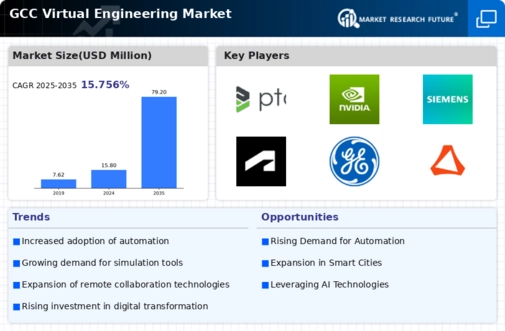The GCC Virtual Engineering Market is experiencing substantial growth, which is primarily due to the widespread adoption of digital technologies and Industry 4.0 initiatives. The governments of GCC countries, including Saudi Arabia and the UAE, are actively promoting digital transformation to improve productivity and innovate in a variety of sectors, including construction, manufacturing, and smart cities. This initiative establishes an advantageous environment for virtual engineering solutions that offer effective design, modeling, and simulation capabilities. Artificial intelligence and machine learning are increasingly being integrated into virtual engineering applications, as evidenced by recent trends.
This integration enables businesses to enhance decision-making processes, expedite project timelines, and decrease costs. Moreover, the GCC's emphasis on sustainability and green technologies, particularly through initiatives such as Saudi Vision 2030 and the UAE's Green Agenda, presents opportunities for virtual engineering tools that can simulate and evaluate environmental impacts, thereby supporting sustainable development goals. The demand for virtual engineering platforms is on the rise as more organizations in the GCC adopt remote work and collaboration.
In addition to facilitating remote collaboration, these platforms also improve the quality of project outcomes by facilitating the exchange of information and real-time communication. Additionally, the region's businesses can now utilize sophisticated virtual engineering tools without incurring substantial initial expenditures due to the expanded availability of cost-effective cloud computing services.
In general, the GCC Virtual Engineering Market is anticipated to continue to thrive as businesses adapt to the evolving operational landscapes and technological advancements, thereby fostering innovation and enhancing competitive advantages across a variety of industries. The market's resilience and adaptability to future changes are further bolstered by the increasing interest in digital skill development and automation.






















Leave a Comment